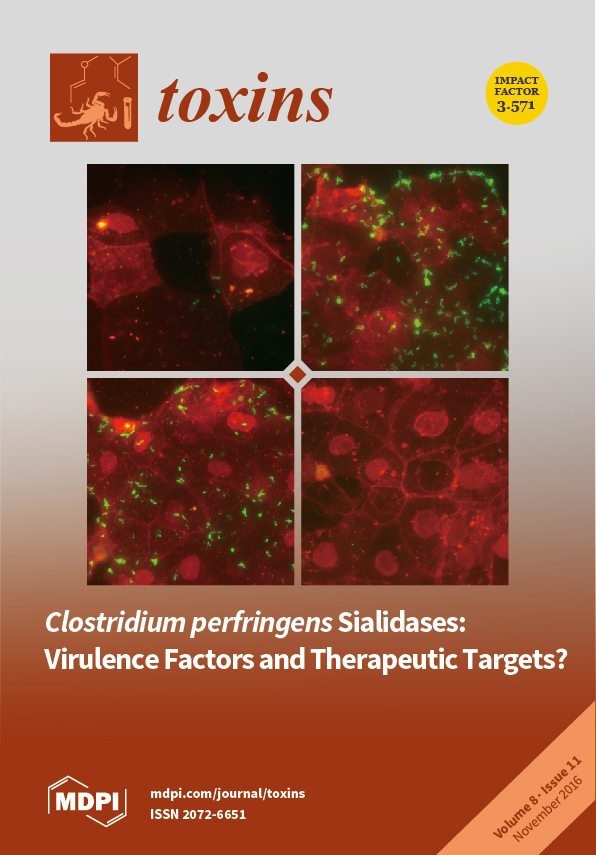Nearly all the cationic molecules tested so far have been shown to reversibly block K
+ current through the cation-selective PA
63 channels of anthrax toxin in a wide nM–mM range of effective concentrations. A significant increase in channel-blocking activity of the cationic
[...] Read more.
Nearly all the cationic molecules tested so far have been shown to reversibly block K
+ current through the cation-selective PA
63 channels of anthrax toxin in a wide nM–mM range of effective concentrations. A significant increase in channel-blocking activity of the cationic compounds was achieved when multiple copies of positively charged ligands were covalently linked to multivalent scaffolds, such as cyclodextrins and dendrimers. Even though multivalent binding can be strong when the individual bonds are relatively weak, for drug discovery purposes we often strive to design multivalent compounds with high individual functional group affinity toward the respective binding site on a multivalent target. Keeping this requirement in mind, here we perform a single-channel/single-molecule study to investigate kinetic parameters of anthrax toxin PA
63 channel blockage by second-generation (G2) poly(amido amine) (PAMAM) dendrimers functionalized with different surface ligands, including G2-NH
2, G2-OH, G2-succinamate, and G2-COONa. We found that the previously reported difference in
IC50 values of the G2-OH/PA
63 and G2-NH
2/PA
63 binding was determined by both on- and off-rates of the reversible dendrimer/channel binding reaction. In 1 M KCl, we observed a decrease of about three folds in
and a decrease of only about ten times in
with G2-OH compared to G2-NH
2. At the same time for both blockers,
and
increased dramatically with transmembrane voltage increase. PAMAM dendrimers functionalized with negatively charged succinamate, but not carboxyl surface groups, still had some residual activity in inhibiting the anthrax toxin channels. At 100 mV, the on-rate of the G2-succinamate binding was comparable with that of G2-OH but showed weaker voltage dependence when compared to G2-OH and G2-NH
2. The residence time of G2-succinamate in the channel exhibited opposite voltage dependence compared to G2-OH and G2-NH
2, increasing with the
cis-negative voltage increase. We also describe kinetics of the PA
63 ion current modulation by two different types of the “imperfect” PAMAM dendrimers, the mixed-surface G2 75% OH 25% NH
2 dendrimer and G3-NH
2 dendron. At low voltages, both “imperfect” dendrimers show similar rate constants but significantly weaker voltage sensitivity when compared with the intact G2-NH
2 PAMAM dendrimer.
Full article






